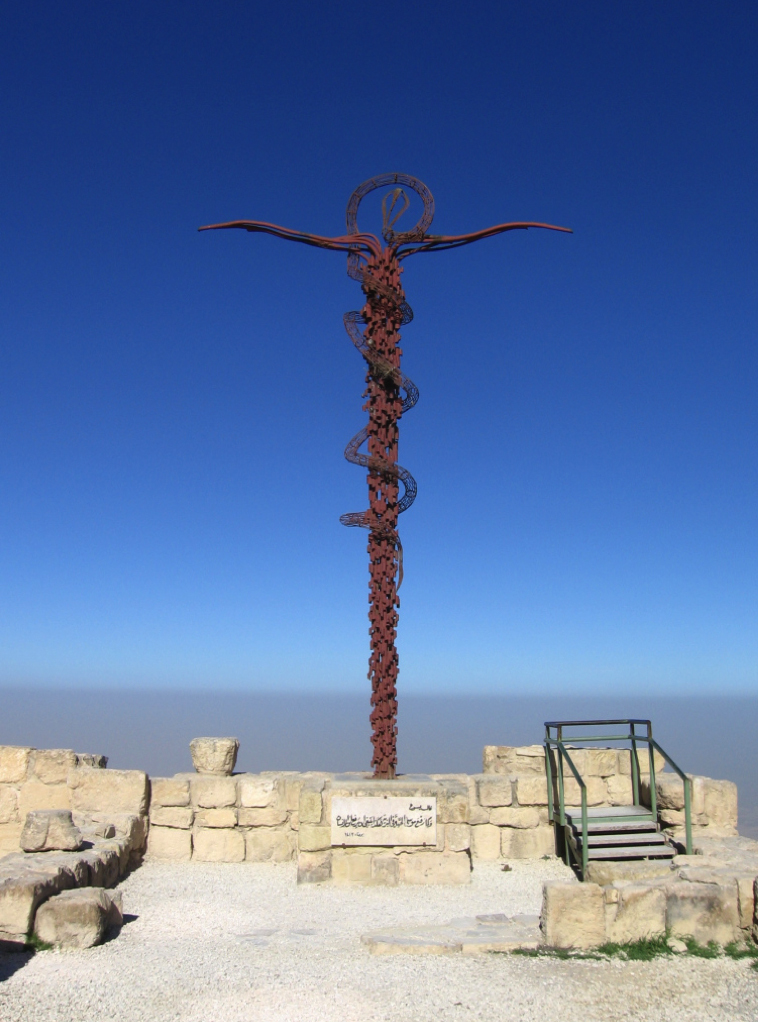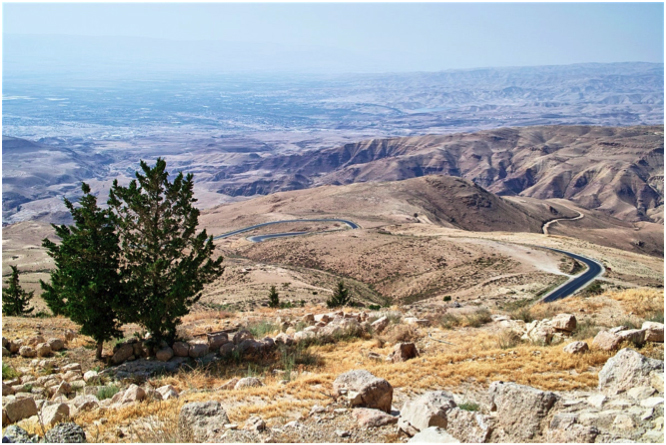Pastor's Blog: I Can See Clearly Now | Holy Land Update 3
|
I don’t know of another story in the Bible, save the crucifixion, that reads as painfully to me as does the story of Moses and Nebo. His story is recounted in Deuteronomy 34, where Moses climbs to the top of Mount Pisgah to the peak of Nebo, where God reveals to him the entirety of the Promised Land, a land that unfortunately Moses will see, but never enter.
To understand why God would not allow Moses to enter into Canaan, you have to go back to Numbers 20, where Moses has led the Children of Israel into the Wilderness of Zin, a desert place bereft of water. The people become so thirsty that they quarrel with and grumble to Moses about how much better they had it back in Egypt. Moses, of course, takes the matter before God, who instructs Moses to speak to the rock that is before the people’s eyes so that they might see that their God was more than capable of providing for their needs through the wilderness. But Moses, most likely out of exasperation with the people, strikes the rock instead, and though water most assuredly gushes forth for the people, God is not pleased with how Moses has not shown obedience to God before the people, a transgression for which Moses must pay what seems to me a cruel and unusual punishment. God says to Moses, “Because you did not trust in me enough to honor me in the sight of all the Israelites, you will not bring this community in the land that I give them” (Numbers 20:12). If you ever thought leading a faith community was a piece of cake, this story will assure you that the burden of doing so is more than any human can shoulder.
So, because Moses would never enter into Canaan, Nebo becomes a place of grace. At Nebo, God allows Moses a glimpse of his people’s destiny so that Moses might know that sin is forgivable. God does not remember His people’s rebellion when they recognize the error of their ways, turn from such rebellion, and commit their future to obeying Him. Such is the story of Lent, the season prior to Easter when once again, God’s people take the opportunity to engage in honest reflection, heartfelt repentance, and renewed dedication.
All of these thoughts flooded my soul when we stood atop Mount Nebo and gazed in the direction of Canaan in the distance and reflected on Moses death and his burial in a valley very near to where we were standing. The Franciscans have built a new church on the site, which I had not seen. Though the mount speaks for itself, the church represents the commitment of God’s people to mark the spot where grace abounded for Israel’s liberator.
There’s one another prominent item on Mount Nebo that must not be overlooked. It is a sculptor by the Italian artist, Giovanni Fantoni, that depicts a bronze serpent coiled on a pole in the shape of a cross. The sculpture represents Moses’ first act of obedience after his failure to obey God in the provision of water for the people. Once again, they grumble about the rough journey Moses has put them through, and God sends poisonous serpents to come upon them. The people cry out to Moses to intercede with God on their behalf. But this time when Moses does so and God gives Moses instructions, Moses follows God’s direction to a tee. He erects a bronze snake upon a pole and calls the attention of the people in that direction so that when they behold the serpent, they will live (Numbers 21:4-9).
Fantoni’s sculpture captures that theme of obedience powerfully, but it does something else as well. It connects it to the message of Jesus and the importance of our placing faith in him. The pole’s cruciform shape calls us to the words of Jesus in John 3, where Jesus chides another leader of Israel, Nicodemus, who cannot comprehend Jesus’ instructions on the priority of being born again. Jesus tells this ruler of the Jews, “Just as Moses lifted up the serpent in the wilderness, so the Son of Man must be lifted up, so that everyone who believes may have eternal life in him” (John 3:14-15). While Moses lifted up his serpent far from Mount Nebo, the story of grace that Nebo represents is surely captured in the cross of Jesus, where through faith in him all sinners may find life everlasting.
No one can stand atop Mount Nebo and not be pulled toward the future. Being that far up and seeing the green pastures below in the distance invites anyone who may be paralyzed by his or her past to consider the possibilities that faith in God’s direction can bring. Couple that transforming truth with a reminder of how at Calvary Jesus paid it all and there is every reason to believe that in spite of the past, the best is yet to come.


